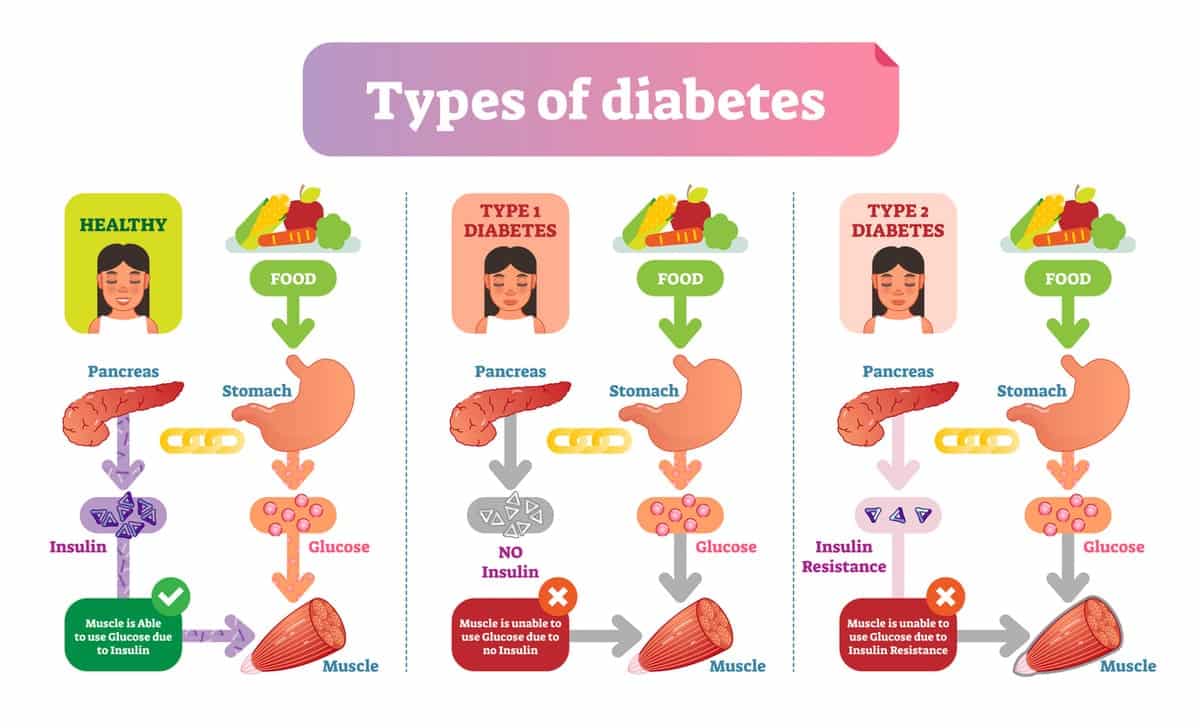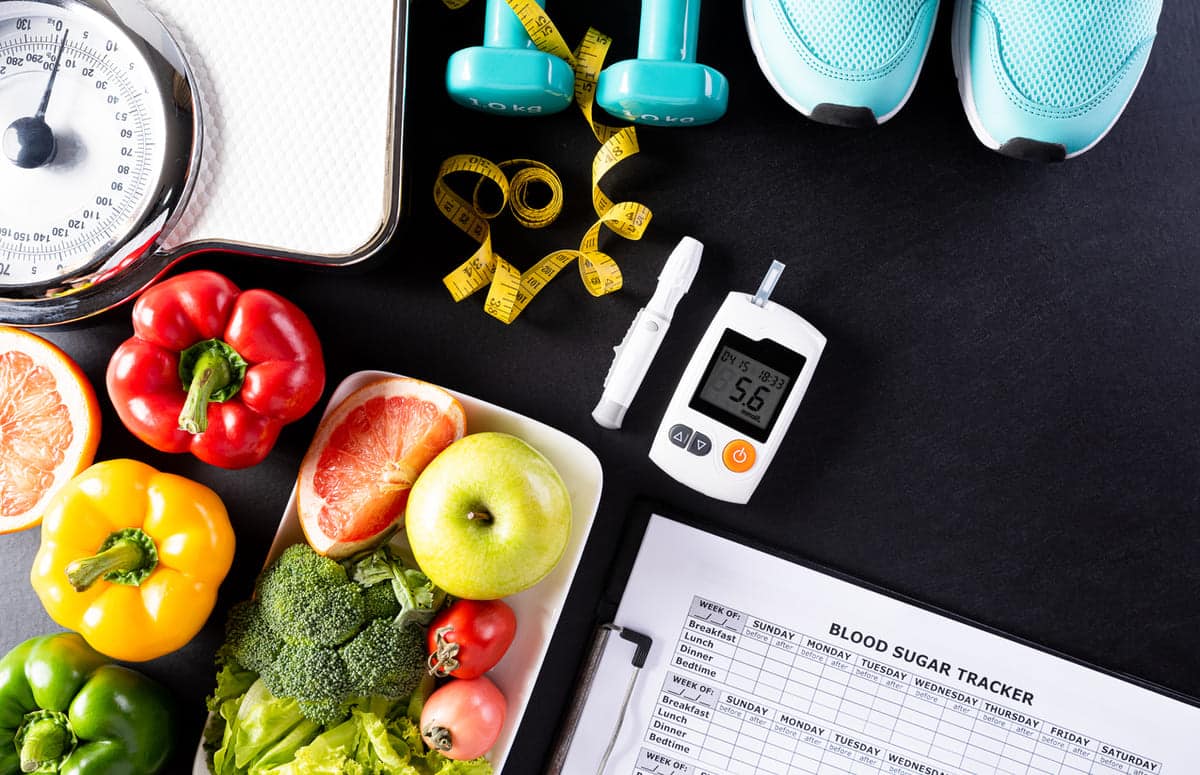According to the CDC, just over 1 in 10 US adults were living with diabetes in 2021. What’s even more important is that more than 1 in 3 US adults were considered to have prediabetes, and 80% of those with prediabetes aren’t even aware. With sugar taking up such a large part of the modern diet, it can be hard to know how to manage your diet. Learn more about identifying diabetes risk factors and finding convenient and safe packaged snacks for diabetics.
What is Diabetes?
In the simplest terms, diabetes is when the body cannot process food and turn it into energy the way it should. The disconnect in how the body does or does not produce insulin is what leads to higher-than-normal blood glucose (sugar) levels. This is true for someone who has been diagnosed with prediabetes, type 1 diabetes, type 2 diabetes, gestational diabetes, or even the rarer forms of diabetes like Latent Autoimmune Diabetes in Adults (LADA) or Maturity-Onset Diabetes of the Young (MODY).
Diabetes is a unique chronic health condition because most people can live long, healthy lives free of diabetes complications by remaining educated about their disease and making lifestyle modifications as they age. For almost 90% of people diagnosed with prediabetes and type 2 diabetes, the disease progression can be delayed or limited by making lifestyle changes like increasing exercise, eating a varied diet, and managing stress.
What are the symptoms of diabetes? How will I know if I have it?

According to the CDC, people with the following symptoms should visit their doctor and ask to have their blood sugar tested for diabetes. Because type 2 diabetes can develop over many years, it doesn’t always have symptoms, and that’s when knowing risk factors are even more important.
Symptoms may include:
- Having to urinate (pee) a lot, often at night
- Being very thirsty
- Losing weight without trying
- Being very hungry
- Having blurry vision
- Having numb or tingling hands or feet
- Feeling very tired
- Having very dry skin
- Having sores that heal slowly
- Having more infections than usual
Testing for diabetes is very simple with a blood test that can be completed in a doctor’s office or clinic. The results will usually come back very quickly.
What’s the difference between type 1 diabetes, type 2 diabetes, and prediabetes?

For someone with type 1 diabetes, the body has stopped making insulin for unknown reasons. It’s more commonly diagnosed in children or young adults and was formerly known as juvenile-onset diabetes. A person with type 1 diabetes will have to use insulin because their body doesn’t produce it.
Prediabetes is when blood glucose levels are higher than normal but not yet always high enough to be considered a diabetes level. Most people who do not make changes will have their prediabetes develop into type 2 diabetes.
Type 2 diabetes is when the body makes too much insulin, and the cells don’t respond as they should. The pancreas produces too much insulin and overwhelms the cells, creating higher blood glucose levels. Making changes like increasing physical activity, managing stress, and eating a healthy diet can prevent ever needing insulin.
Does eating sugar put me at risk for diabetes?
Eating sugar or one single thing doesn’t increase the risk for diabetes. Diabetes risk is based on a variety of factors. In some cases, it is thought to be genetic or based upon the body’s autoimmune response. Type 1, LADA, and MODY don’t have clear risk factors, and they are more likely to be found in children, teens, or young adults and someone with a family history of diabetes.
Prediabetes and type 2 diabetes have more known risk factors, but it’s not solely based on diet or even how much sugar someone eats. The risk factors include being overweight, being 45 or older, having a family member with type 2 diabetes, being physically active less than 3 times a week, being African American, Hispanic or Latino, American Indian or Alaska Native, and for women, having had gestational diabetes or a baby who weighed more than 9 pounds at birth.
What happens if my diabetes isn’t controlled?

Diabetes doesn’t always give symptoms of being well controlled, so diabetes self-management education and support is an important part of living a long and healthy life with diabetes. People with diabetes are at higher risk for serious health issues related to heart disease, chronic kidney disease as well as problems with oral health, vision, hearing, and foot care.
Managing blood sugar by testing daily and staying within the blood sugar targets established by a patient’s healthcare team is one part of controlling diabetes. Staying at a healthy weight and losing belly fat is another part of it. Finally, eating the right foods and the right times is another part of controlling diabetes.
How can I manage my prediabetes or diabetes? What are easy and good packaged snacks for diabetics?
The best way to manage both prediabetes and type 2 diabetes is through lifestyle choices like exercising at least 150 minutes a week over 3 – 5 different sessions and eating a variety of whole foods with whole grains, protein, fiber, healthy fats, and limited added sugars.
Here is a list of 7 easy-to-carry healthy snacks for diabetics and anyone who would like to limit their risk factors. The key is planning ahead and making smart snack choices that don’t require lots of effort to prepare during a busy lifestyle. Mixing and matching any from this list would even make a well-rounded charcuterie-style lunch or picnic.
- Air-popped, unsalted and unsweetened popcorn – SkinnyPop or Angie’s BOOMCHICKAPOP
- Single servings of cheese – Sargento String Cheese or Mini Babybel Cheeses
- Dips – Wholly Guacamole Mini Cups or Sabra Single Serving Hummus Cups
- Vegetables – Oh Snap Pickle Bites or Libby’s Sweet Corn Cups
- Flavored Nuts or Seeds – Wonderful Pistachios or Blue Diamond Almonds
- Protein Bars – LaraBar or Kind Bar
- Greek or Plant-Based Yogurts – Chobani Low-Sugar Greek Yogurt or So Delicious Coconutmilk Yogurt
There are a wealth of other snack ideas out there. For example, you can consider taking along some prepackaged peanut butter or some dark chocolate. If you have a cooler along and would like some low-carb snacks, you can make some hard-boiled eggs and bring them for a healthy treat that packs in 6 grams of protein per egg. Or, if you’re in the mood for a crunchy snack, grab some trail mix, sunflower seeds, chia seeds, or whole-grain crackers with cream cheese. These all offer a great way to bring along diabetic-friendly snacks that will offer good options for healthy snack options on the go.
Read More:
Can This Fast-Mimicking Diet Improve Health When You Have Type 2 Diabetes?







